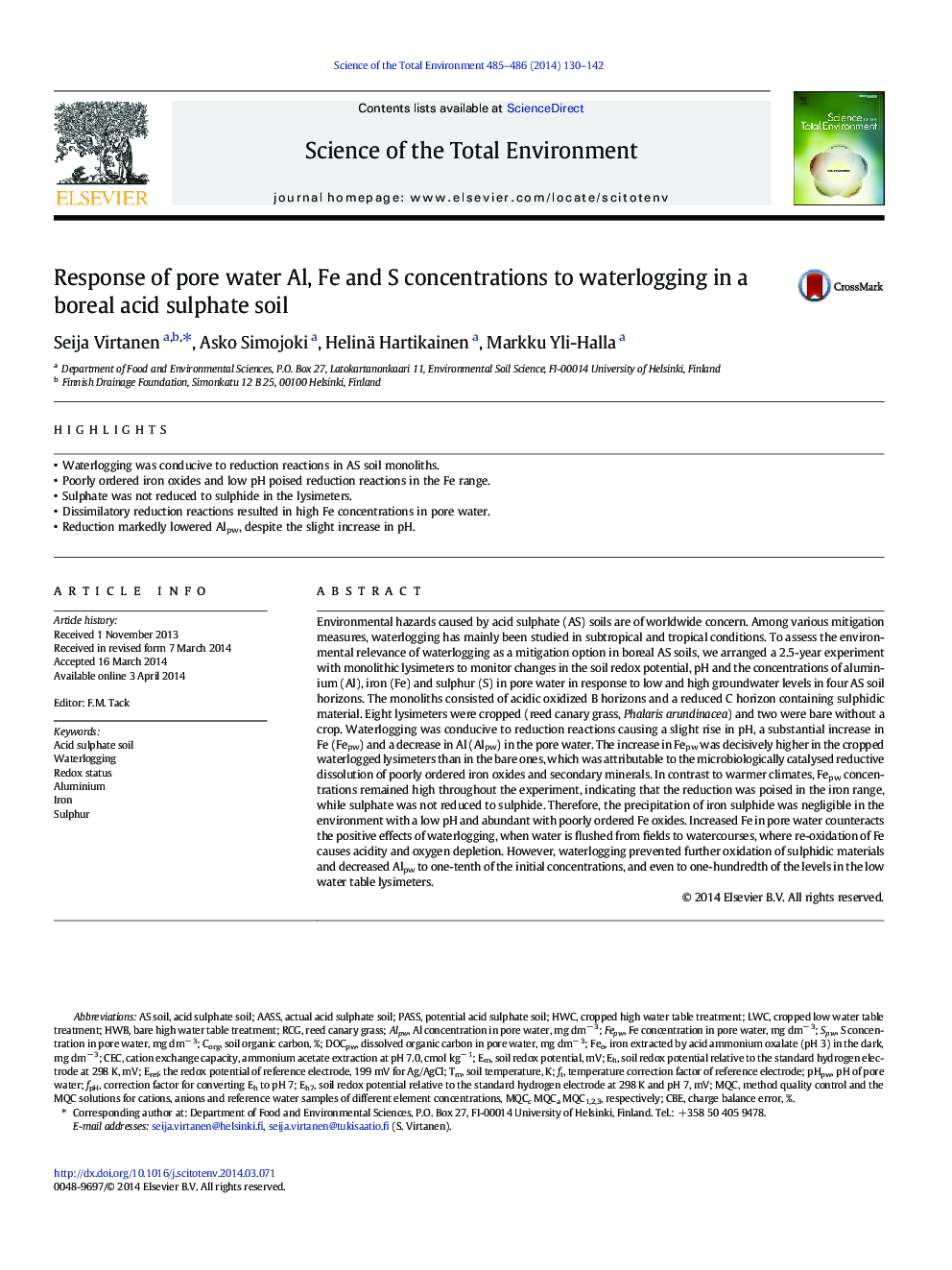| کد مقاله | کد نشریه | سال انتشار | مقاله انگلیسی | نسخه تمام متن |
|---|---|---|---|---|
| 6330340 | 1619783 | 2014 | 13 صفحه PDF | دانلود رایگان |
عنوان انگلیسی مقاله ISI
Response of pore water Al, Fe and S concentrations to waterlogging in a boreal acid sulphate soil
دانلود مقاله + سفارش ترجمه
دانلود مقاله ISI انگلیسی
رایگان برای ایرانیان
کلمات کلیدی
موضوعات مرتبط
علوم زیستی و بیوفناوری
علوم محیط زیست
شیمی زیست محیطی
پیش نمایش صفحه اول مقاله

چکیده انگلیسی
Environmental hazards caused by acid sulphate (AS) soils are of worldwide concern. Among various mitigation measures, waterlogging has mainly been studied in subtropical and tropical conditions. To assess the environmental relevance of waterlogging as a mitigation option in boreal AS soils, we arranged a 2.5-year experiment with monolithic lysimeters to monitor changes in the soil redox potential, pH and the concentrations of aluminium (Al), iron (Fe) and sulphur (S) in pore water in response to low and high groundwater levels in four AS soil horizons. The monoliths consisted of acidic oxidized B horizons and a reduced C horizon containing sulphidic material. Eight lysimeters were cropped (reed canary grass, Phalaris arundinacea) and two were bare without a crop. Waterlogging was conducive to reduction reactions causing a slight rise in pH, a substantial increase in Fe (Fepw) and a decrease in Al (Alpw) in the pore water. The increase in Fepw was decisively higher in the cropped waterlogged lysimeters than in the bare ones, which was attributable to the microbiologically catalysed reductive dissolution of poorly ordered iron oxides and secondary minerals. In contrast to warmer climates, Fepw concentrations remained high throughout the experiment, indicating that the reduction was poised in the iron range, while sulphate was not reduced to sulphide. Therefore, the precipitation of iron sulphide was negligible in the environment with a low pH and abundant with poorly ordered Fe oxides. Increased Fe in pore water counteracts the positive effects of waterlogging, when water is flushed from fields to watercourses, where re-oxidation of Fe causes acidity and oxygen depletion. However, waterlogging prevented further oxidation of sulphidic materials and decreased Alpw to one-tenth of the initial concentrations, and even to one-hundredth of the levels in the low water table lysimeters.
ناشر
Database: Elsevier - ScienceDirect (ساینس دایرکت)
Journal: Science of The Total Environment - Volumes 485â486, 1 July 2014, Pages 130-142
Journal: Science of The Total Environment - Volumes 485â486, 1 July 2014, Pages 130-142
نویسندگان
Seija Virtanen, Asko Simojoki, Helinä Hartikainen, Markku Yli-Halla,